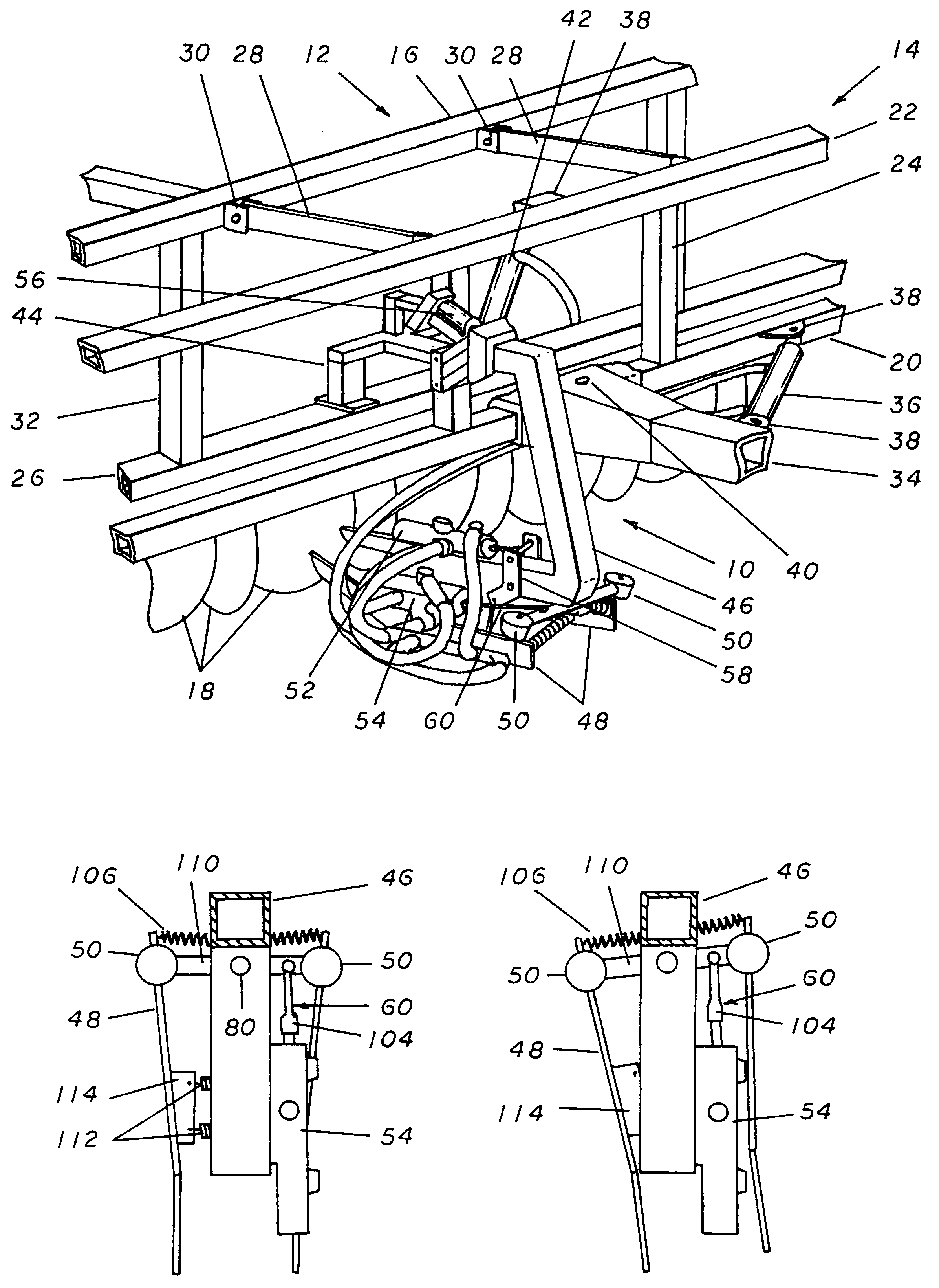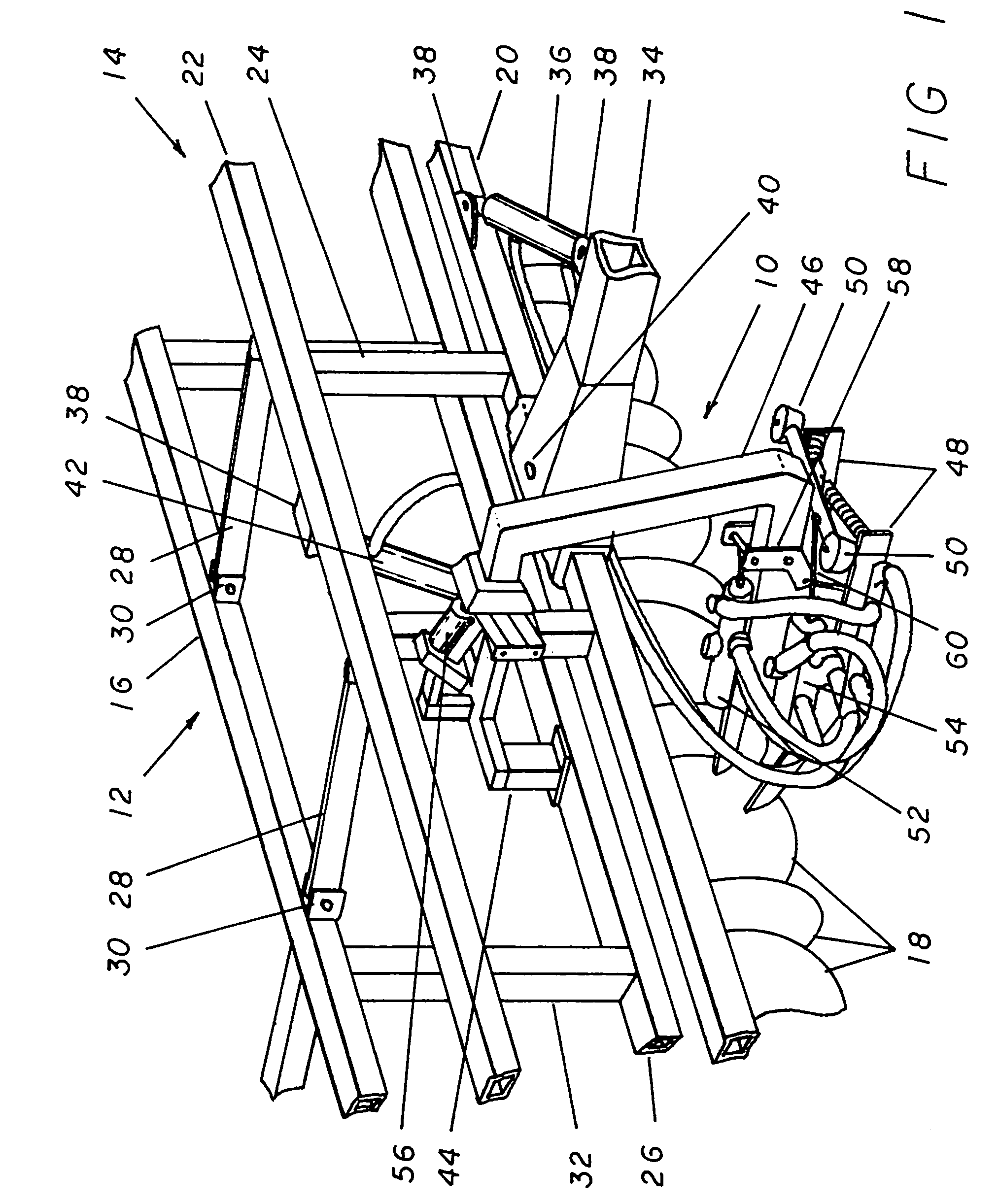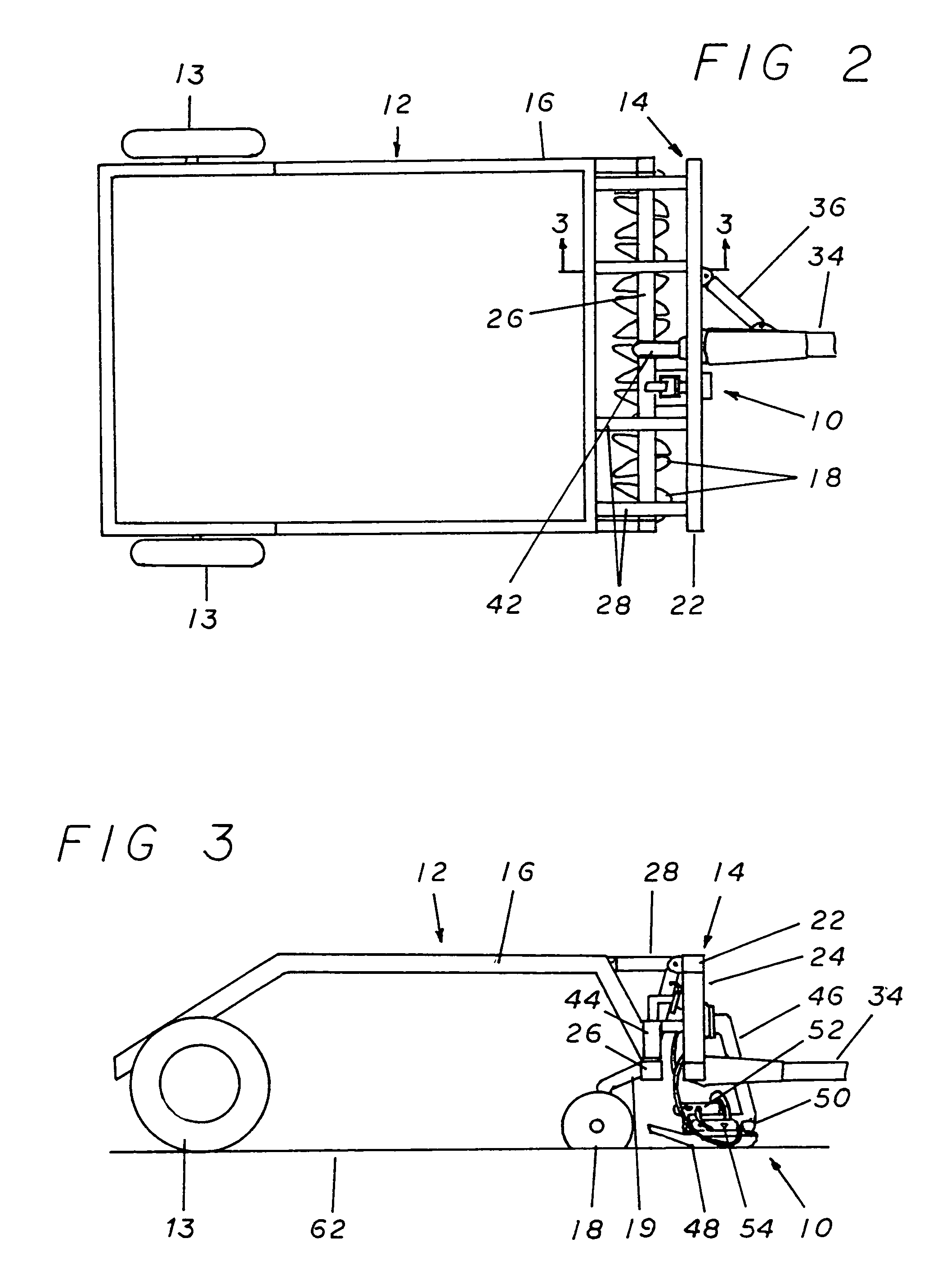Automatic row crop implement positioner
a technology of crop implements and positioners, which is applied in the direction of agricultural machines, applications, instruments, etc., can solve the problems of damage to crops, damage to crops, and damage to plants, and achieve the effect of high degree of accuracy
- Summary
- Abstract
- Description
- Claims
- Application Information
AI Technical Summary
Benefits of technology
Problems solved by technology
Method used
Image
Examples
Embodiment Construction
[0027]Referring now to the drawings, and more specifically to FIGS. 1, 2, and 3, the positioning control apparatus 10 is a device that connects to towed farm implements such as a harvester 12 or other similar devices and is employed to keep the harvester 12 in the proper alignment when a farmer is working in a row crop. For the purpose of simplicity, the positioning control apparatus 10 herein illustrated is represented as used in conjunction with a harvester 12 but it must be noted that it would work equally well with any towed implement commonly used in the working of row crop fields. Additionally, the illustrated harvester 12 is intended to represent a generalized form of harvesters and is not intended as a depiction of a specific type of implement.
[0028]The harvester 12 is generally made up of two connected frames. The most forward of these is the primary frame 14 which is the portion of the harvester 12 employed to attach it to the towing vehicle and from which the second porti...
PUM
 Login to View More
Login to View More Abstract
Description
Claims
Application Information
 Login to View More
Login to View More - R&D
- Intellectual Property
- Life Sciences
- Materials
- Tech Scout
- Unparalleled Data Quality
- Higher Quality Content
- 60% Fewer Hallucinations
Browse by: Latest US Patents, China's latest patents, Technical Efficacy Thesaurus, Application Domain, Technology Topic, Popular Technical Reports.
© 2025 PatSnap. All rights reserved.Legal|Privacy policy|Modern Slavery Act Transparency Statement|Sitemap|About US| Contact US: help@patsnap.com



